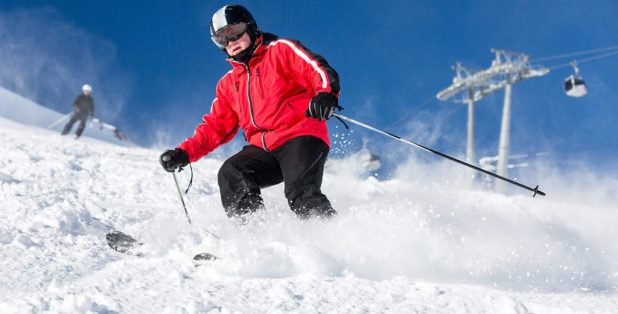Alpine, cross-country, and freestyle skiing. Snowboarding and ski jumping. Lovers of winter sports are enjoyed the mid-February spectacle, as the top skiers and snowboarders in the world shred, rip, propel, jump, flip, glide, backside, carve, and soar their way to Olympic victory.
Injuries are common in the Olympics, and most slope accidents involve crashes and collisions. The British Journal of Sports Medicine, which regularly analyzes Olympic mishaps, found that after the Pyeongchang 2018 Games, 12% of athletes reported injuries. The competition with the highest percentage of injured athletes was the ski halfpipe competition.
While amateur skiers and snowboarders may not be at as high of a risk as Olympic-level skiers and snowboarders, joint pain can keep some people off the slopes. The knees, and to a lesser degree, the hips, are two of the joints that can be the most bothersome to skiers and snowboarders. If you suffer from joint pain but aren’t ready to give up your favorite winter pastime, here are some things you can do to keep your joints happy.
Maintain a healthy weight. You’ve heard this advice before (including in this blog) and it can’t be emphasized enough. Consider this: your hips and knees are not only the joints most taxed by skiing and snowboarding, they’re also the ones most burdened by extra body weight. One study found that if you’re obese, you’re four to five times more likely to develop arthritis of the knees. Another study found that women who lost 11 pounds over a 10-year period reduced their chances of developing osteoarthritis by about 50 percent.
Strengthen your muscles. Strong muscles are critical to supporting your joints. And when it comes to your knees, strong quadriceps and hamstrings are extremely important. If you have osteoarthritis in your lower back, strengthening your abdominal and back muscles is just what the doctor ordered. You might consult with a trainer or physical therapist to create a personalized program, but here are a couple rules of thumb: avoid exercising the same muscle groups two days in a row and rest a full day between workouts. Take off more time if your joints become swollen or painful.
Stretch before you hit the slopes. Start with a brisk walk in the morning before you buy your lift ticket. Squats, hamstring and quad stretches, upper body and hip rotations, and side bends are all good stretches. We like this 11-minute video that lays out a series of stretches skiers and snowboarders can do.
Consider investing in a pair of customized knee braces. Braces help stabilize and support weakened joints. Mass-produced knee braces may work for some skiers, but braces created just for you are often less bulky, more comfortable, and better fitting.
Be smart about where you ski/ride and don’t push through pain. Consider the difficulty of the mountain or trail and be mindful of your limitations. Jumps and bumps can be particularly tough on joints, so consider avoiding them. Groomers are your best bet. Listen to your body and if your joints start complaining, take a break and get a hot chocolate in the lodge. If the pain persists, call it a day to avoid risking long-term injury.
If your joint pain has you concerned about skiing, you may want to talk to an orthopedic specialist before you hit the slopes. Try our Find the Doctor Tool or Contact Us for more information.




